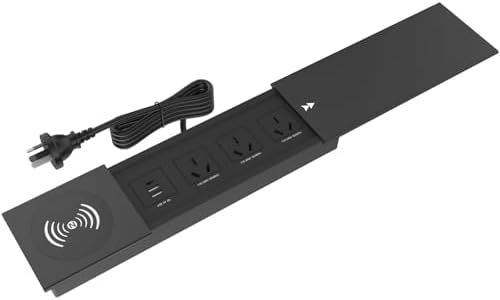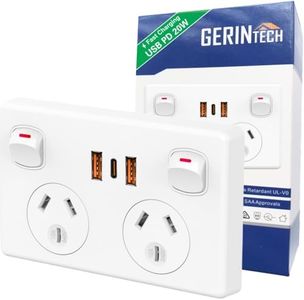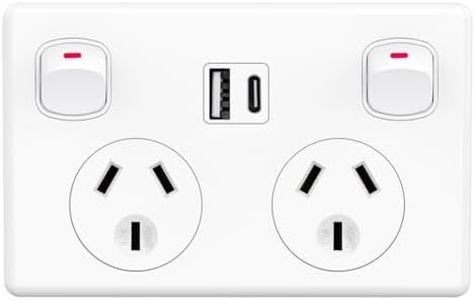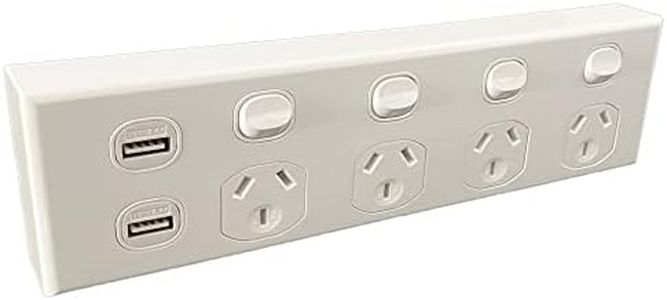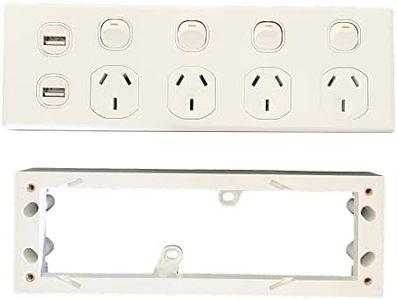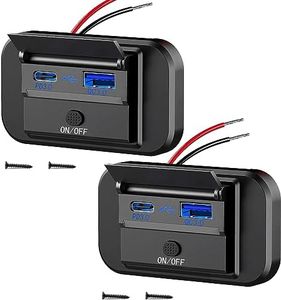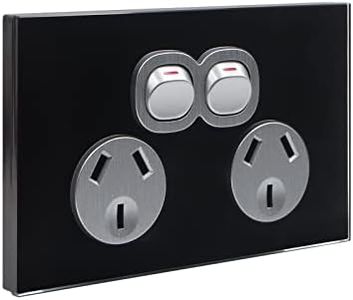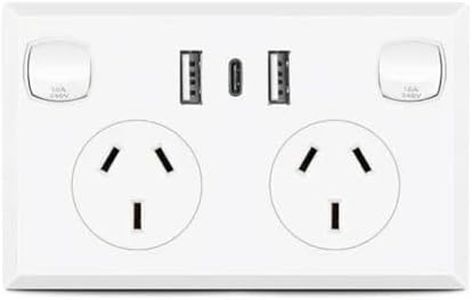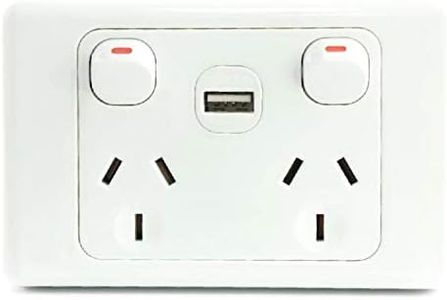We Use CookiesWe use cookies to enhance the security, performance,
functionality and for analytical and promotional activities. By continuing to browse this site you
are agreeing to our privacy policy
10 Best Usb Wall Outlets
From leading brands and best sellers available on the web.Buying Guide for the Best Usb Wall Outlets
Choosing the right USB wall outlet can make charging your devices much more convenient and streamlined by removing the need for power adapters and freeing up standard outlets. When selecting a USB wall outlet, it’s important to balance your needs for speed, number of devices you want to charge simultaneously, compatibility, and safety features. By understanding the main features, you can pick an outlet that fits your lifestyle and home setup.USB Port TypeUSB wall outlets can come with USB-A, USB-C, or a combination of both types of ports. USB-A is the traditional, widely compatible port, while USB-C is newer and supports faster charging for devices that accept it, like many modern phones and tablets. If most of your devices use USB-A, a multi-port USB-A outlet is practical. But if you own newer devices or wish to future-proof your setup, look for outlets with one or more USB-C ports. Think about the cables and devices you currently have: choose a mix that matches your charging habits.
Charging Speed (Amperage and Wattage)The speed at which an outlet charges your devices depends mainly on the amperage (measured in amps, often noted as A) and wattage (measured in watts, as W) output per port. Lower output (like 1A or 5W per USB port) is enough for basic phones, but can be slow for tablets or newer phones that accept fast charging. Mid-range options offer 2.1A-2.4A (about 10-12W) per port, which is a good balance for phones and tablets. USB-C fast-charging ports can offer 15W, 18W, or even more, which is ideal for quickly charging compatible modern devices. Think about which devices you want to charge—if you often need to refill bigger batteries quickly, prioritize higher output per port.
Number of USB PortsOutlets differ in how many USB devices you can charge at one time. Some have one or two USB ports, while others go up to four or even six. If you have several devices to charge overnight or throughout the day, a multi-port option helps avoid clutter and the need for adapters. However, remember that more ports may mean less power per port if the total output is shared between them. Consider your charging habits: if you often have guests or own many portable gadgets, more ports are beneficial.
Integration with Standard OutletsSome USB wall outlets combine USB ports with regular AC sockets, allowing you to plug in appliances or lamps alongside your USB devices. This is especially useful if you have limited wall space or want a tidy, all-in-one charging station. Decide if you’d like to keep some traditional outlets alongside the USB ports, especially in busy areas like kitchens or bedrooms.
Safety and CertificationSafety certifications like UL (Underwriters Laboratories) or ETL indicate that an outlet meets established electrical safety standards. Features like surge protection, overload protection, and tamper resistance help prevent damage to your devices and reduce fire risks. Always prioritize safety-certified outlets, especially if children will be using them or if you have expensive devices plugged in.
Ease of InstallationSome USB wall outlets are designed for simple, direct replacement of existing outlets using standard wiring, while others may require professional installation or additional wiring work. If you are comfortable with basic home electrical work, many models are do-it-yourself friendly and include clear instructions. For more complex installations, factor in whether you’d need help from an electrician.
